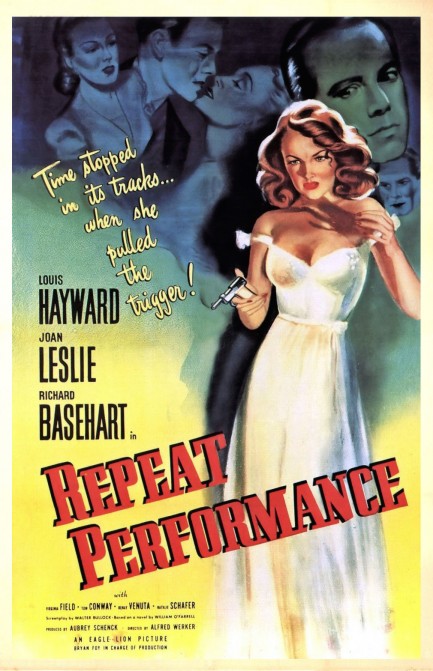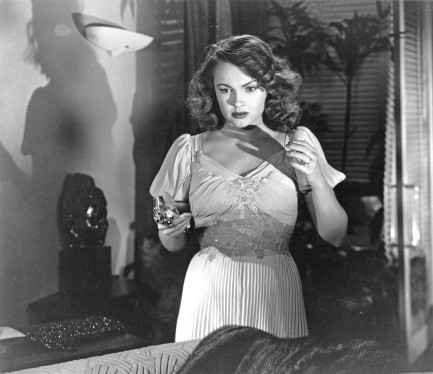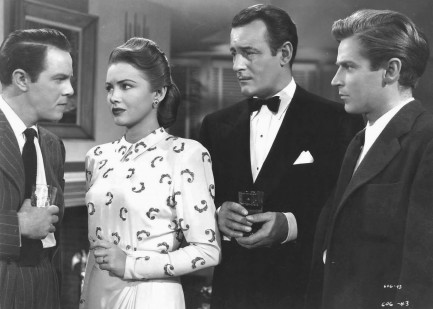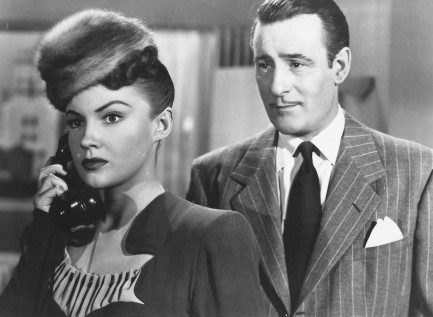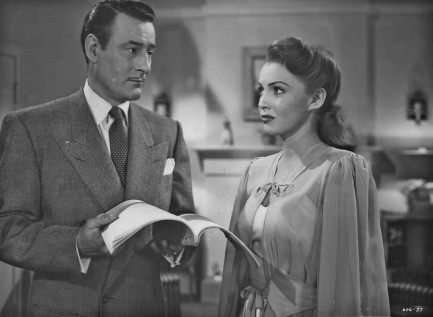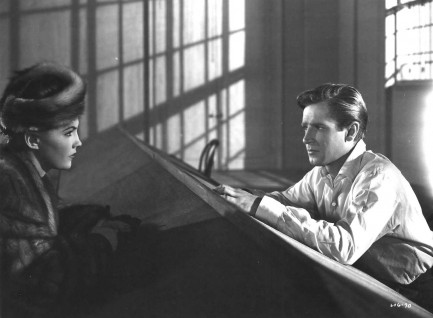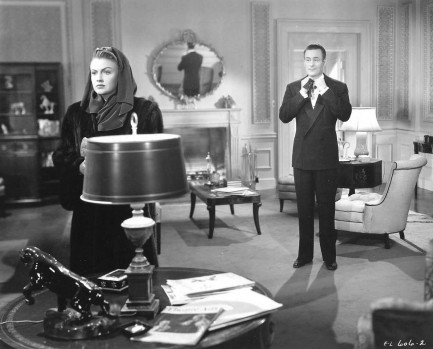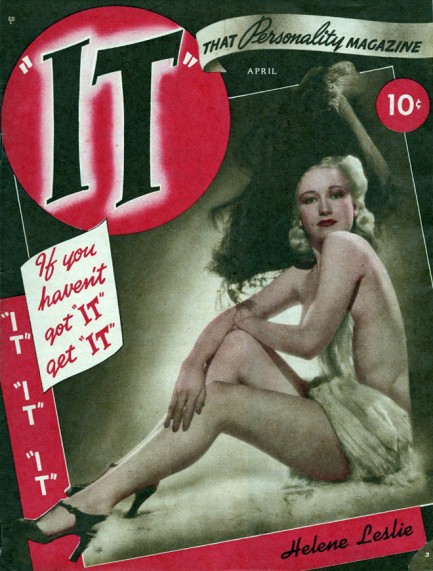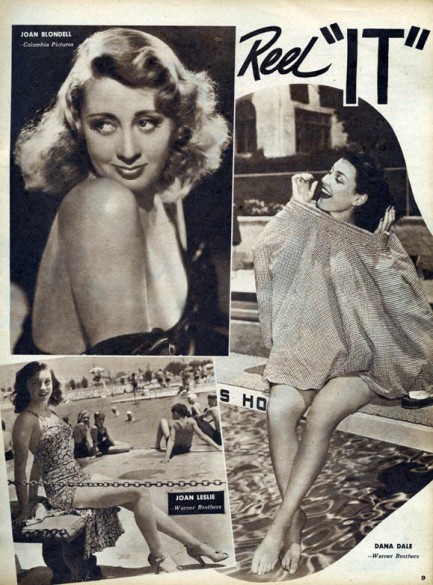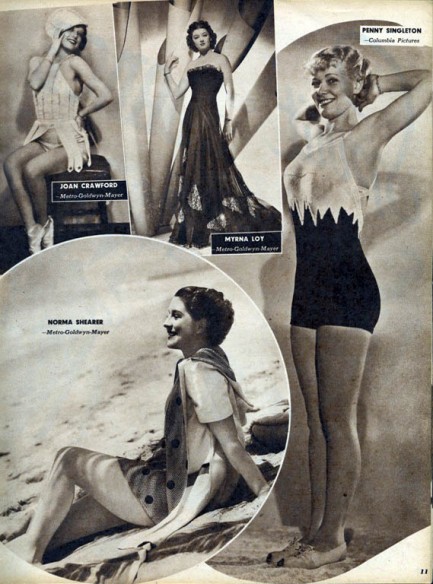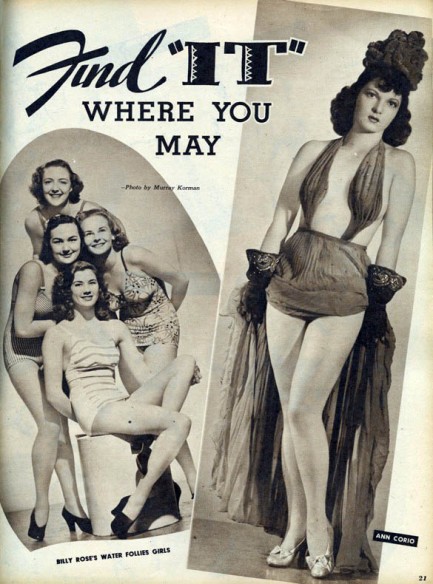 Touch a hot Stover and you'll get burned. 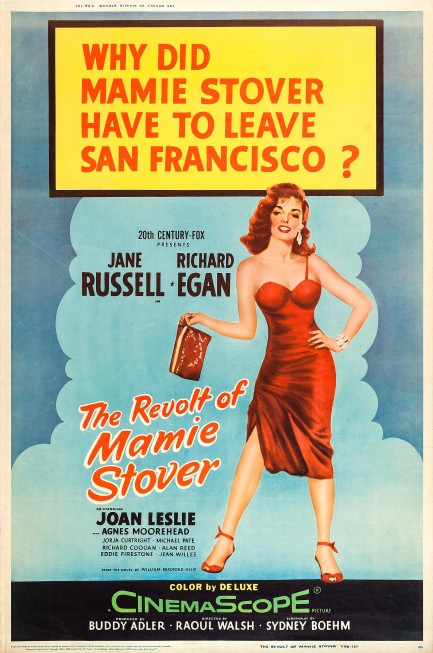
Above is a promo poster made for the Jane Russell drama The Revolt of Mamie Stover, which premiered in Honolulu today in 1956, and was sourced from William Bradford Huie's novel, a book we discussed at length some months back. The movie was directed by Raoul Walsh of Casablanca fame. He's properly credited on the above art, but for some reason on the second poster, which you'll find below, his name appears as Walsh Raoul. It's a weird mistake to get past so many studio eyes, but things like that happen, we guess. The U.S. art is uncredited, but the third poster, also below, was made for the film's British release and that was painted by Jock Hinchcliffe. He wasn't a noted stylist whose work is especially sought after today, but he did paint numerous posters, and he signed the piece below. Anyone who did that gets singled out here, because so few artists were credited by the studios.
Regarding the movie, needless to say, the challenging themes of Huie's novel were turned on their head by Hollywood. Mamie is no longer a racist toward Hawaiian islanders—in fact, the one islander character who gets to speak is bigoted against her. And she's no longer a prostitute but a hostess who induces men who frequent Honolulu's Bungalow Club to buy more booze and pay extra for private time. That private time takes place in a rattan decorated sideroom, but there's no bed evident. Instead there's a table and two chairs, so apparently men pay just to chat with Mamie, and the other women at the club. There's a sexual implication, but of the barest sort, because obviously Twentieth Century Fox could not have made a movie about Jane Russell prostituting herself 51,840 times—the exact number given in the book.
The Revolt of Mamie Stover is another example of suppressed sexual themes during the mid-century era, which is a big reason why we extend our purview at Pulp Intl. into erotic films and imagery—because in our era the previously unshown can be shown and openly examined. We've discussed this before. If you watch the movie, it's interesting to ponder the presumed maturity of book readers, who were asked point blank to consider a prolific prostitute the protagonist of the story, as opposed to cinemagoers, who were never presented with the possibility. In any case, the screen version of Stover, while not a sex worker, is at least a very knowing character, and Russell certainly has the sneer needed to pull off portraying a romantically cynical money worshipper determined to reach the top tax bracket no matter what it costs—her or others.
We figure anyone who has what it takes to get rich for simply, er, chatting with men deserves wealth, and indeed Mamie gets her money. That's not a spoiler, because it's never in doubt. It's part of the revolt—her resistance against forced membership in the underclass. The question is whether she can retain her newly gained higher status, and whether she can preserve the love she's stumbled upon along the way, because in American cinema moneyseeking characters must choose between their fortunes and their souls. That choice is supposed to supply the drama, but we think the movie is more interesting for its proto-feminist feel and class discussion. It's pretty good on all fronts, though, except that co-star Richard Egan is a bit of an empty shell. But he doesn't ruin it. How can he? He has Russell to carry him the entire ninety-three minutes.
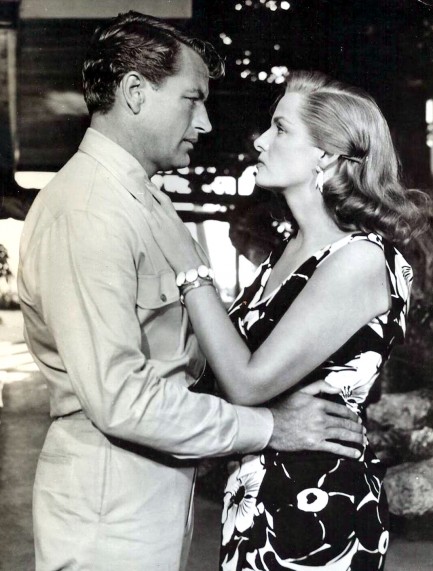 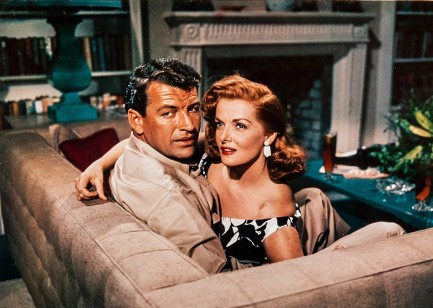 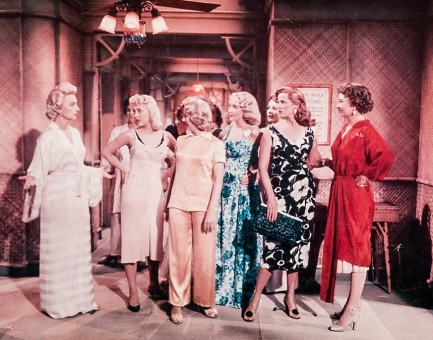 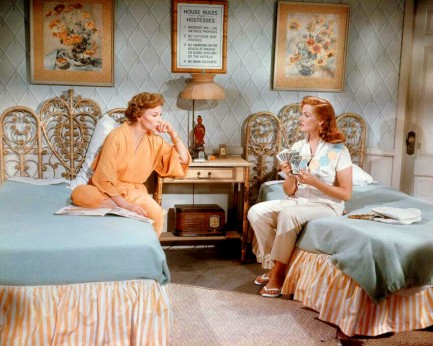 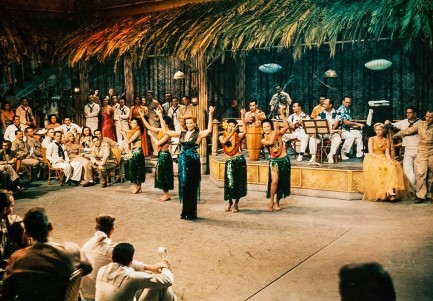 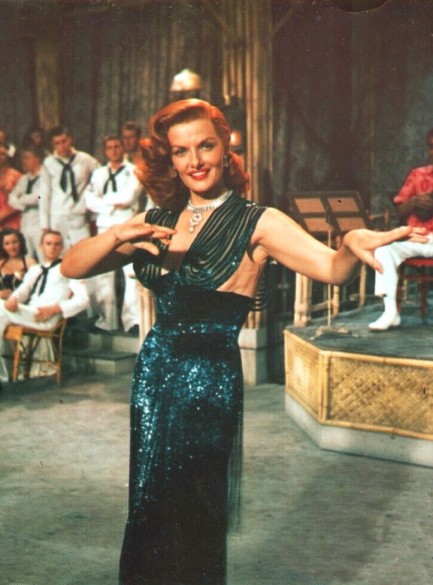 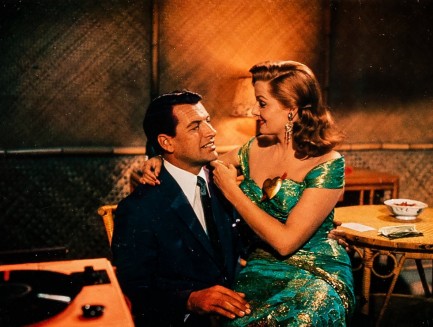 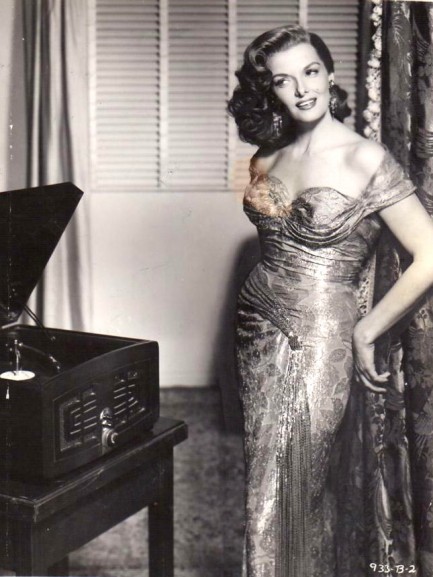 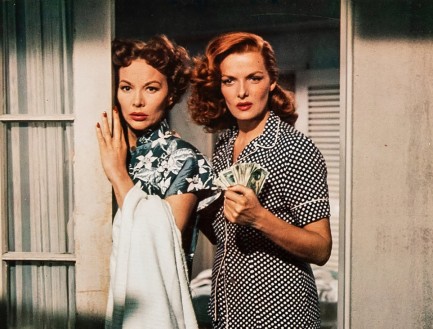  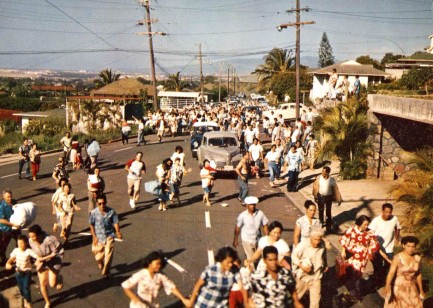 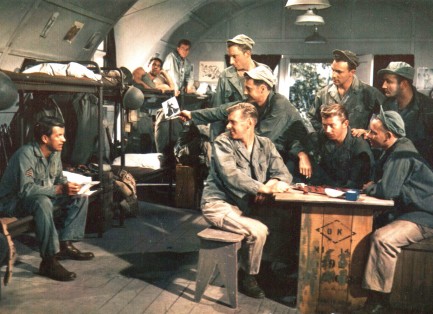 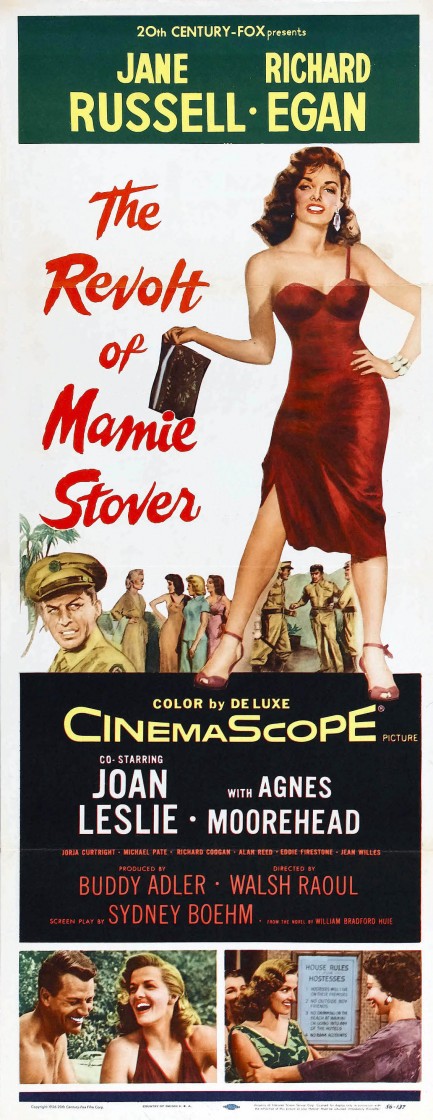 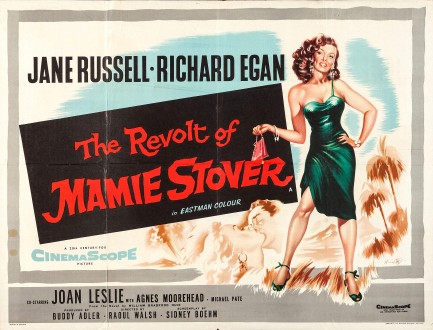 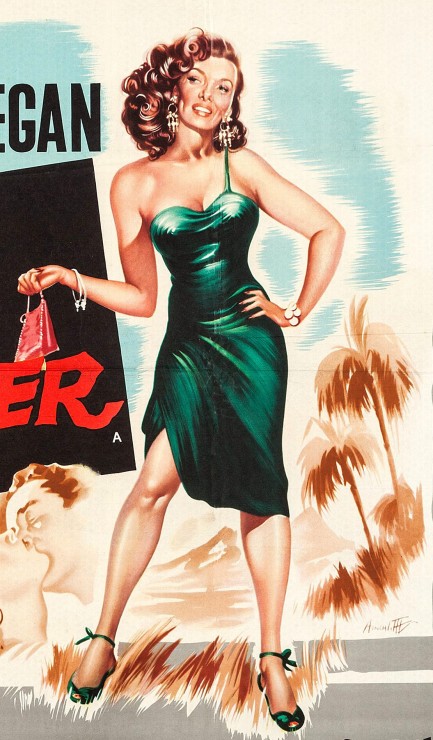
 Let's all Joan in the fun. 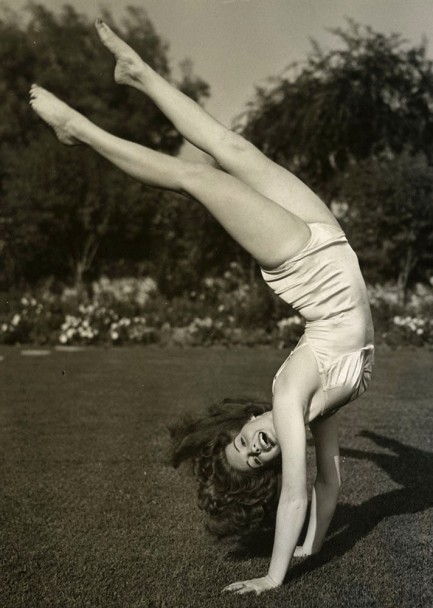
American actress Joan Leslie joins our procession of acrobatic femmes fatales with this shot of her pulling off a maneuver that would put most people in traction. Leslie was a well regarded star who appeared in High Sierra, Sergeant York, Yankee Doodle Dandy, Thieves Fall Out, and many other films. This image is purely awesome. If you look at her hair you see she's really in motion, possibly executing something more than a mere handstand. And holding a smile while doing it. It was probably the fifteenth attempt after fourteen screwfaces, but still, color us impressed. From 1940, this one.
|
 |

The headlines that mattered yesteryear.
2003—Hope Dies
Film legend Bob Hope dies of pneumonia two months after celebrating his 100th birthday. 1945—Churchill Given the Sack
In spite of admiring Winston Churchill as a great wartime leader, Britons elect
Clement Attlee the nation's new prime minister in a sweeping victory for the Labour Party over the Conservatives. 1952—Evita Peron Dies
Eva Duarte de Peron, aka Evita, wife of the president of the Argentine Republic, dies from cancer at age 33. Evita had brought the working classes into a position of political power never witnessed before, but was hated by the nation's powerful military class. She is lain to rest in Milan, Italy in a secret grave under a nun's name, but is eventually returned to Argentina for reburial beside her husband in 1974. 1943—Mussolini Calls It Quits
Italian dictator Benito Mussolini steps down as head of the armed forces and the government. It soon becomes clear that Il Duce did not relinquish power voluntarily, but was forced to resign after former Fascist colleagues turned against him. He is later installed by Germany as leader of the Italian Social Republic in the north of the country, but is killed by partisans in 1945.
|

|
|

It's easy. We have an uploader that makes it a snap. Use it to submit your art, text, header, and subhead. Your post can be funny, serious, or anything in between, as long as it's vintage pulp. You'll get a byline and experience the fleeting pride of free authorship. We'll edit your post for typos, but the rest is up to you. Click here to give us your best shot.

|
|


















